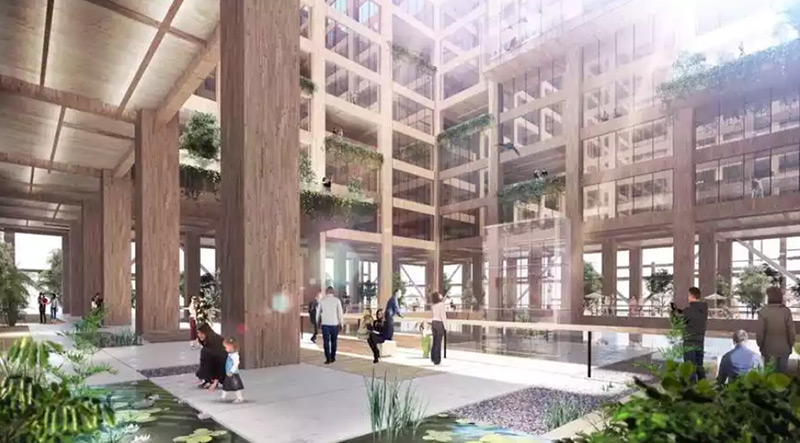The Guardian recently reported the Japanese wood products company Sumitomo Forestry Co is planning to build a 350 metre 70-floor tower in Tokyo for its 350th anniversary in 2041. It’s anticipated to be the world’s tallest wooden Skyscraper.

The W350 tower will be mostly wood, and 10{e3829ec1db02d54faaf9fa2de0d48db26af01d7a7944a63c3b26976124791cab} steel. Photograph: Sumitomo Forestry Co
W350 Tower – Urban Development for Humans
According to the architecture design firm Nikken Sekkei, the W350 Project building’s internal framework will be made of a hybrid of wood and steel (only 10{e3829ec1db02d54faaf9fa2de0d48db26af01d7a7944a63c3b26976124791cab} though!) in order to take into account the high rate of seismicity in Japan; and the exterior will be covered with greenery to contribute to urban biodiversity.
Japan’s government supports wood buildings, going so far as to pass a law requiring it be used for all public buildings three stories or less in 2010.
Benefits of Wooden Skyscrapers
Timber is light and strong which is well suited for tall buildings that must hold their own weight. It is also more flexible than steel and concrete which increases the distance it can span while still maintains the strength.
Another benefit of wooden construction is its global warming mitigation potential. According to Chad Oliver, a forest ecologist at Yale University, by replacing concrete and steel with wood from sustainably managed forests, the building industry can reduce up to 31{e3829ec1db02d54faaf9fa2de0d48db26af01d7a7944a63c3b26976124791cab} of global carbon emissions. If wood were simply burned for energy, the CO2 that the tree had absorbed years earlier would immediately return to the atmosphere, thus solid wood means keeping CO2 out of the atmosphere. In the long term, it could absorb CO2 from atmosphere, potentially reverse climate change.
Wooden Skyscrapers in the World
Today wooden skyscrapers are booming around the world; here are some notable examples:
- Norway, 52.8 metres tower block (tallest in the world, 2015)
- Vancouver Canada, student residence at University of British Columbia, 53 metres (tallest in the world, 2016)
- Vienna Austria, HoHo tower, 84 metres (under construction)
- Minneapolis United States, 18-storey T3 project (first in the U.S., 2016). Others in Portland, Oregon, and New York City
- Stockholm, Trätoppen “the treetop”, 133m
- Chicago, 80-storey River Beech Tower, 244m (Tallest among proposed)











